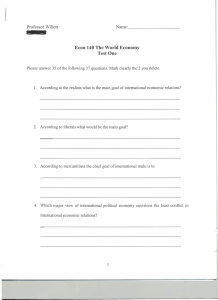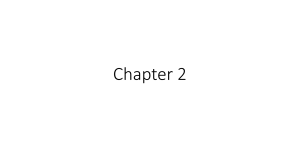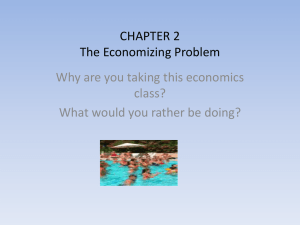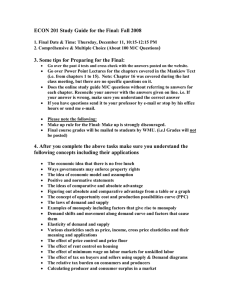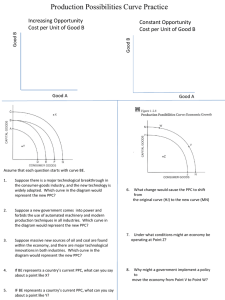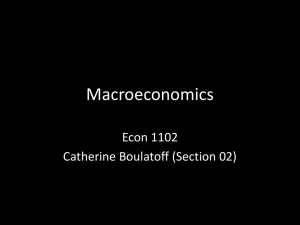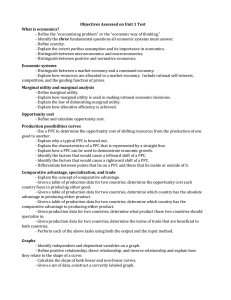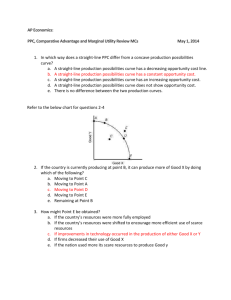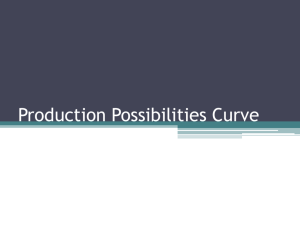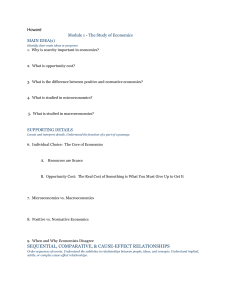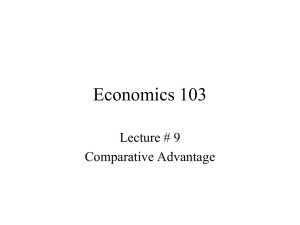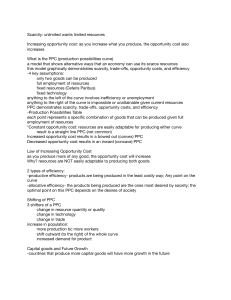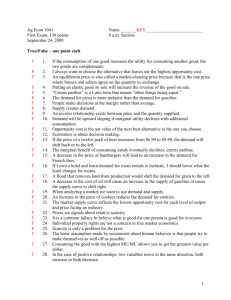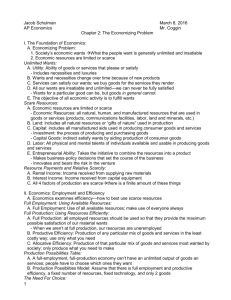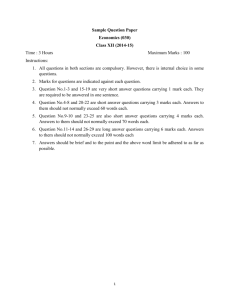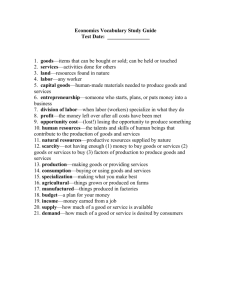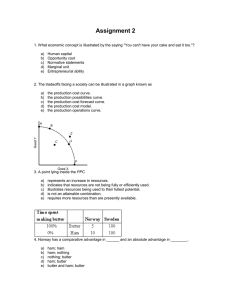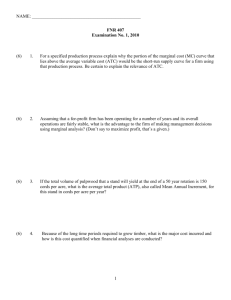Document
advertisement
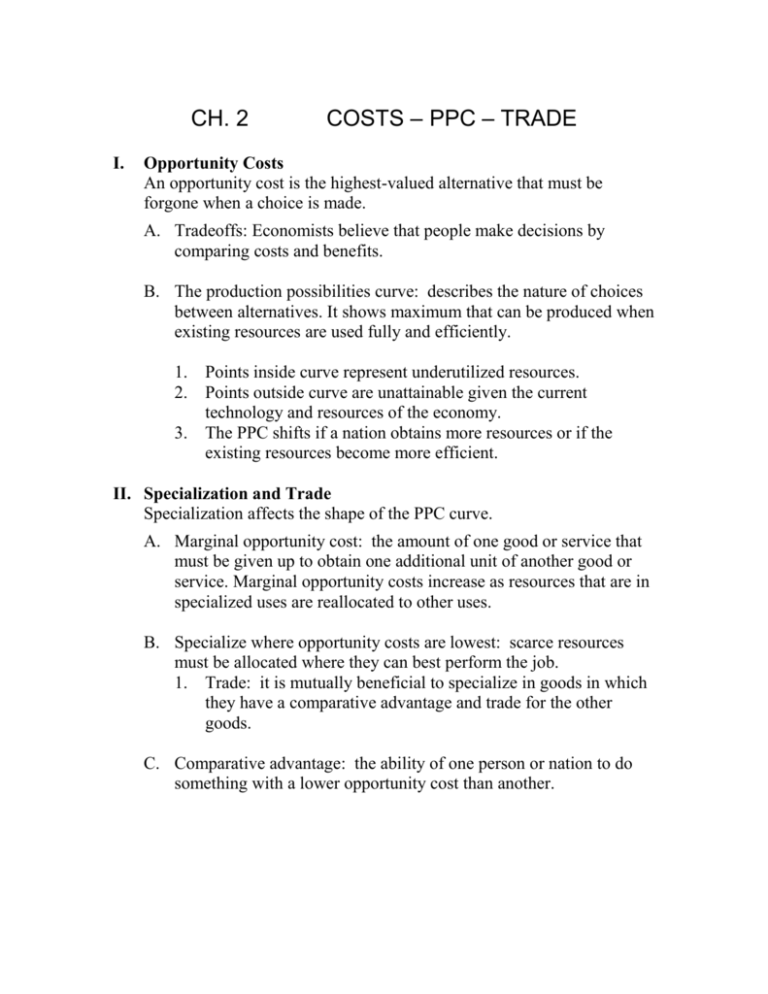
CH. 2 I. COSTS – PPC – TRADE Opportunity Costs An opportunity cost is the highest-valued alternative that must be forgone when a choice is made. A. Tradeoffs: Economists believe that people make decisions by comparing costs and benefits. B. The production possibilities curve: describes the nature of choices between alternatives. It shows maximum that can be produced when existing resources are used fully and efficiently. 1. Points inside curve represent underutilized resources. 2. Points outside curve are unattainable given the current technology and resources of the economy. 3. The PPC shifts if a nation obtains more resources or if the existing resources become more efficient. II. Specialization and Trade Specialization affects the shape of the PPC curve. A. Marginal opportunity cost: the amount of one good or service that must be given up to obtain one additional unit of another good or service. Marginal opportunity costs increase as resources that are in specialized uses are reallocated to other uses. B. Specialize where opportunity costs are lowest: scarce resources must be allocated where they can best perform the job. 1. Trade: it is mutually beneficial to specialize in goods in which they have a comparative advantage and trade for the other goods. C. Comparative advantage: the ability of one person or nation to do something with a lower opportunity cost than another. OPPORTUNITIES FOR DISCUSSION 1. Discuss the opportunity cost of Tiger Woods, Tom Hanks, or another major sports or entertainment figure. 2. Discuss ways that a country could shift its production possibilities curve to the right through improved technology. 3. Describe the increasing marginal opportunity costs of individuals who specialize in surgery, auto repair, plumbing, or college teaching. 4. List the major goods your state produces. Does your state have a comparative advantage in these goods? Can you describe the reasons for this comparative advantage?

